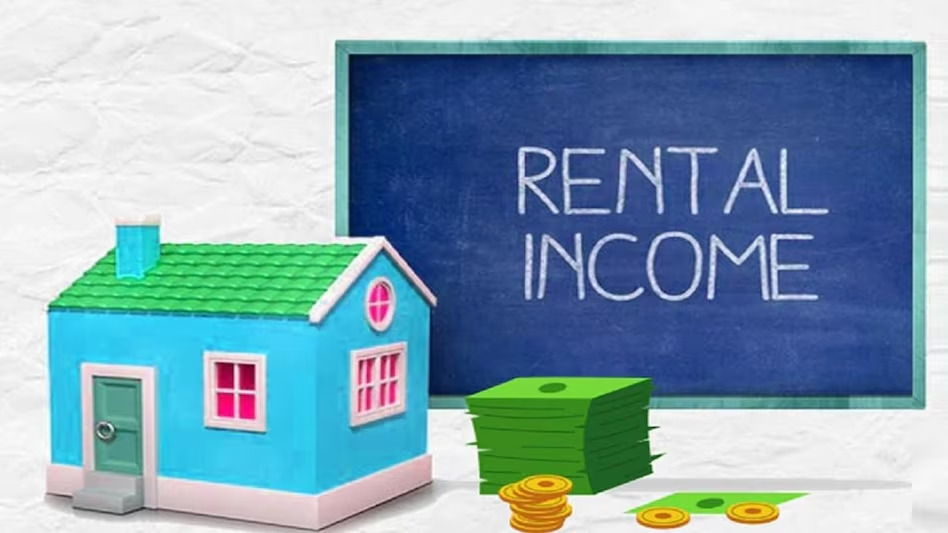How to Achieve Tax-Free Rental Income of ₹20,00,000 Under the New Union Budget 2025

Updated on: Feb 8th, 2025| 3 min read
Introduction
Many property owners aspire to earn substantial rental income while keeping tax liabilities at bay. Thanks to recent changes introduced in the Union Budget 2025, there are new opportunities for minimizing taxes on rental income. This article will explore how property owners can utilize provisions under Section 24 of the Income Tax Act, 1961, alongside the benefits of the Union Budget 2025, to make their rental income tax-free.
Understanding the Union Budget 2025 Reforms
The Union Budget 2025 has introduced a series of reforms aimed at easing the tax burden on middle-class taxpayers. A standout provision of this budget is the increase in the income tax exemption limit. Under the new tax regime, individuals earning up to ₹12,00,000 annually will be exempt from paying income tax.
This reform is particularly significant for property owners, as it opens up avenues to make rental income tax-free, if certain deductions and rebates are applied strategically. The new provisions allow property owners to better manage their rental earnings and keep more money in their pockets.
Leveraging Section 24 of the Income Tax Act, 1961 for Tax Benefits
To reduce taxable rental income, property owners can utilize the provisions of Section 24 of the Income Tax Act, 1961. This section provides two primary deductions:
- Standard Deduction (Section 24(a))
- Interest on Housing Loan (Section 24(b))
Standard Deduction (Section 24(a))
Under Section 24(a), property owners can claim a flat deduction of 30% on the Net Annual Value (NAV) of the property. NAV is the gross rental income minus municipal taxes. For example, if your annual rental income is ₹20,00,000 and no municipal taxes are paid, the standard deduction would be 30% of ₹20,00,000, which amounts to ₹6,00,000.
This deduction reduces the taxable rental income, making it easier to minimize your tax burden.
Interest on Housing Loan (Section 24(b))
If you have taken a housing loan to purchase a property and that property is rented out, Section 24(b) allows you to deduct up to ₹2,00,000 in interest paid on the housing loan. This is another useful provision that can further lower taxable rental income. Note that this deduction applies only if the property is rented out.
It’s also important to remember that this deduction is not available if the property is self-occupied under the new tax regime.
Strategic Application for Tax Efficiency
By applying the deductions under Section 24, property owners can reduce their taxable rental income. This can significantly lower tax liabilities and make rental income tax-free.
Let’s take an example of how these deductions work:
Example of Tax Savings Using Section 24 Deductions
Imagine Mr. X rents out his property and receives ₹20,00,000 as gross rent annually. Here’s how Mr. X can apply the deductions:
Step 1: Calculate Gross Rent Received
Mr. X’s gross rent for the year is ₹20,00,000.
Step 2: Apply Standard Deduction Under Section 24(a)
Assuming no municipal taxes are paid, the standard deduction of 30% can be claimed. This is calculated as:
30% of ₹20,00,000 = ₹6,00,000
Net rental income after standard deduction:
₹20,00,000 – ₹6,00,000 = ₹14,00,000
Step 3: Apply Housing Loan Interest Deduction Under Section 24(b)
Mr. X has a housing loan and pays ₹2,00,000 as interest annually. He can claim this as a deduction from the net rental income:
₹14,00,000 – ₹2,00,000 = ₹12,00,000
Now, Mr. X’s taxable rental income is ₹12,00,000.
Step-by-Step Process to Minimize Tax Liability Post Union Budget 2025
Now that we’ve seen how Section 24 works, let’s look at the steps property owners should follow to minimize their tax liability.
Step 1: Calculate Gross Rent Received
Start by calculating the total gross rental income you receive for the year. This includes the rent paid by tenants.
Step 2: Apply Deductions Under Section 24
Next, apply the two primary deductions available under Section 24:
- The 30% standard deduction on your Net Annual Value.
- The interest deduction on housing loans (up to ₹2,00,000).
Step 3: Apply Tax Rebate Under Section 87A
According to the provisions in Union Budget 2025, if your net taxable income is ₹12,00,000 or below, you are eligible for a tax rebate under Section 87A. The rebate amount can be up to ₹60,000, reducing your tax liability to zero.
For example, if your taxable rental income is ₹12,00,000, you are eligible for the Section 87A rebate. This rebate effectively reduces your tax liability to ₹0.
Summary: Tax-Free Rental Income of ₹20,00,000
By applying Section 24 deductions and using the Section 87A rebate, Mr. X successfully reduces his taxable rental income to ₹12,00,000, which qualifies for the ₹60,000 tax rebate. As a result, his tax liability becomes zero, and he is able to enjoy a tax-free rental income of ₹20,00,000 annually.
Conclusion
The Union Budget 2025 introduces substantial reforms to benefit property owners, especially in terms of reducing tax liabilities. By effectively leveraging provisions under Section 24 of the Income Tax Act, such as the standard deduction and housing loan interest deduction, and using the Section 87A rebate, property owners can minimize their taxable rental income. This strategy allows them to keep more of their rental earnings and make the rental income tax-free.
For property owners who earn significant rental income, such as ₹20,00,000 annually, applying these provisions effectively can provide substantial tax savings. By staying informed about tax reforms and utilizing them strategically, property owners can optimize their tax planning and enjoy more financial freedom.
Final Thoughts
The new provisions introduced by the Union Budget 2025 are a golden opportunity for property owners to reduce their tax burden. With the right tax planning, you can maximize your rental income while minimizing tax liabilities, ensuring that your rental property remains a profitable investment.
Let’s Connect!
Trusted By Your Favorite Brands






